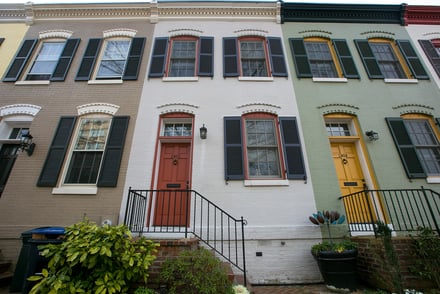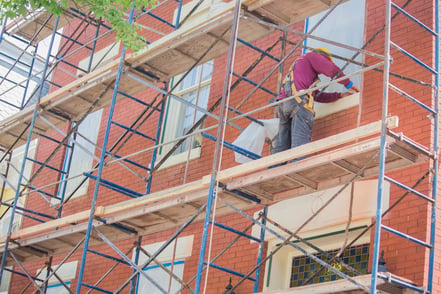Hard winters are reminders of how devastating weather can be on brick facades. The freeze-thaw cycles eventually lead to damage to brick and mortar. Spring is the best time to take stock of your historic brick home, identify any damaged areas, and start planning for repairs.
What Should You Look For?
Homeowners can easily detect the signs of brick and mortar damage. Here are some tips for getting started:
- Start with a visual inspection of the brick joints. Look for signs of failing or missing mortar joints between the bricks. You may need to follow up by performing a probing test with a small knife. If the mortar is loose, crumbling, or falls out easily with digging, it is in need of repair or restoration.
- Visually inspect the walls for a crumbling or flaking of the surface of their brickwork. This form of deterioration, known as spalling, usually results from some source of water damage.
- A white powdery substance on the brick is efflorescence. Although it is unattractive, it's usually not harmful to brick masonry. It is, however, an indication of the presence of excess water in the masonry, which can lead to more severe issues.
What Are Your Next Steps?
If you think that repairs are needed, contact a masonry contractor for a site visit. When selecting masonry contractors in Washington DC, make sure that they are specialists in the correct application of traditional materials and methods. Experts in historical brick restoration can assist you in developing your plan for repair that maintains the structural authenticity. Here are some things you will need to know:
- Are any repairs urgent? Which?
- What is the priority of the others?
- Can these projects be scheduled over a period of time?
- How long will each take?
- What is the cost of each?
- Which have the option of replacing OR repair?
You need to be fully informed before you make decisions about restoration and repair projects. Some brick restoration projects can be expensive and require budgeting. As an owner of an old brick home, you know that your efforts to maintain the historical authenticity as well as the curb appeal increase the value of the property. Having a working plan for both repair and maintenance will ensure your home's continuing historical value.
Renaissance Development, a leader in historic home renovation and preservation, specializes in the restoration of a historic brick building's mortar joints using traditional methods (tuckpointing) and materials. Contact us for a free site visit and project quote.
4/23/18 8:18 AM


